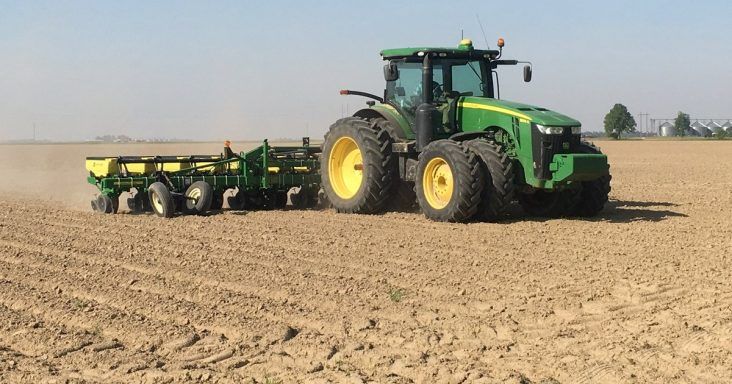Soybean planting ahead of schedule in the Arkansas Delta
by May 6, 2025 2:03 pm 366 views

Flood waters have receded across the Arkansas Delta and farmers are rapidly planting soybeans to make up for the loss of time.
According to the U.S. Department of Agriculture, 45% of the state’s planned 3 million soybean acres had been planted as of April 27, putting growers well ahead of the five-year average of 31% planted at this point in the season.
Repeated storms led to flooding across the state throughout April left the 2025 planting season in peril for agricultural industry. The storms caused an estimated $78.9 million in crop losses. Winter wheat, as well as any early-planted corn or soybeans all had losses.
Soybeans are the state’s top row crop in terms of acres and it ranks among the top soybean growing states in the country.
Jeremy Ross, extension soybean agronomist for the University of Arkansas System Division of Agriculture, said most of the state’s soybean acreage will likely recover from April’s damage.
“When you get away from the flooding closer to major rivers, farmers are planting fields that are dry,” Ross said. “There was quite a bit of field activity last week in some areas, but some received rain last weekend and more today.”
In 2024, harvest for many Arkansas crops, from corn to soybeans to rice, came to fruition in a tight time window, causing bottlenecks at buying points, sometimes overwhelming barge and storage capacity. Ross said the timing of the 2025 harvest is likely to be more dispersed.
“This is going to be one of those years where we will have gaps in the planting, which is not a bad thing when it comes to spreading out the harvest,” he said. “I was still walking fields the first of this week assessing plant stands, and we are keeping a majority of the planted fields I’ve walked. Some spot planting and lower ends of fields, where water stood for several days, will need to be replanted.”
The National Agricultural Statistics Service Crop Progress report indicated that farmers had 45% of their soybeans planted, and 24% had emerged by the end of April.
